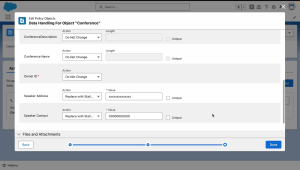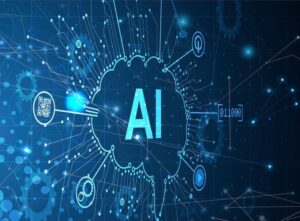Artificial intelligence has played a central role in the fight against the coronavirus. Cotiviti has leveraged AI to predict COVID-19 hot spots around the country before an outbreak happens.
As the coronavirus continues to spread around the globe, we’ve seen a surge in the use of cutting edge technologies to track and control the pandemic, especially artificial intelligence. It seems like only a distant memory when artificial intelligence (AI) was being discussed as an emergent “existential threat” to humanity. However, with the rise of a pandemic, we’ve quickly embraced the ever-expanding capabilities of AI as a part of our first line of defense.
Recently, an AI platform fed mountains of pharmaceutical data and research studies journals determined that a rheumatoid arthritis medication could potentially be used to treat COVID-19 patients. As we reported earlier this month, some companies are deploying surveillance systems harnessing AI to pinpoint potential infections and mitigate the spread of the pandemic.
SEE: Coronavirus: Critical IT policies and tools every business needs (TechRepublic Premium)
One of the tremendous advantages of AI is the ability to absorb databases of information at warp speed. It’s simply too labor-intensive (if not virtually impossible) for a human being to review every single study and every clinical trial directly or indirectly related to a medical phenomenon.
“That’s how I spend my time between 2 o’clock in the morning and 4 o’clock in the morning, trying to catch up on a lot of the clinical information,” explained Dr. Emad Rizk, chairman, president and CEO of Cotiviti.
The healthcare analytics and solution company Cotiviti is now using AI and a mass of health data to predict future coronavirus hot spots around the US before these clusters emerge. During our interview, Rizk expressed his belief that AI and deep learning can greatly benefit mankind, from accelerating treatment to potentially improving current pharmaceuticals, but he does reiterate a sense of caution about the data being fed to the algorithms.
“You have to be careful that the algorithms are not using a small window of data. In other words, using just two to three data elements to come to a conclusion is a lot different than using 100 data elements,” Rizk said.
Predicting hot spots around the US
Cotiviti processes patient screening information and medical claims in its Caspian Insights Platform and uses this information to identify trends. The platform leverages machine learning alongside a wide spectrum of healthcare data to illustrate a “longitudinal” view of patient treatment and care outcomes over time.
The platform plays a central role in Cotiviti’s recently unveiled COVID-19 Outbreak Tracker. The interactive map provides weekly predictions about potentially hidden hot spots around the US. The map also highlights areas where coronavirus mitigation efforts may be working, illustrating a decreased probability of a hidden outbreak. Cotiviti uses a vast array of medical information including chest X-rays, emergency department visits, CPT codes, ICD-9 codes, and more to pinpoint hotbeds.
For more on mapping, check out our Flipboard magazine, Coronavirus maps
“We’re not looking at confirmed cases only, we’re looking at leading indicators by using our technology and comprehensive database [to] potentially see anything that might be occurring so we can raise the flag and say [these] ZIP codes look suspicious,” Rizk said.
In early March, the company used Caspian data to pinpoint nearly 2 dozen states with signs indicating a potential future coronavirus outbreak. Within two weeks, 80 percent of these predicted hot spots became a reality, according to Cotiviti. Since then the company has refined its algorithm and pinpointed future hot spots with up to 91% accuracy, per Rizk.
Monitoring indicators as states begin to ease restrictions
New clinical data is available around the clock, and this information can be applied to advance the model as the virus spreads and other hot spots contract. The data will also be closely monitored when it comes to seasonal flu trends and using this information to pinpoint anomalies indicative of potential coronavirus cases. In the coming weeks and months, there will be interesting predictive indicator updates to gauge as cities and states slowly begin to reopen for business.
“When we go to ZIP code X-Y-Z, we can use our model to hone in and begin to see if there was any correlation with opening up that ZIP code to an increase in amplitude and volume of flu-like symptoms using our deep machine learning and our AI incidence,” Rizk said.
A comprehensive approach to data and information
For this particular crisis, feeding an algorithm the appropriate information to do its task is one challenge. People are also struggling to glean useful insights amid a deluge of seemingly never-ending coronavirus news coverage and, at times, conflicting reports. Rizk concluded our conversation touching on his colleagues and comrades at the forefront of this pandemic and reiterating the importance of taking a comprehensive 360-degree approach to information.
“I have many friends out on the front line serving and doing everything that they can. And we are all trying to get through the bombardment of information out there. Everyone is trying to help. But again, everybody is coming at it from a different lens,” he said.
“One angle, you’ll only see one angle, not the whole picture,” he continued.
Also see

Image: Cotiviti
Source of Article




